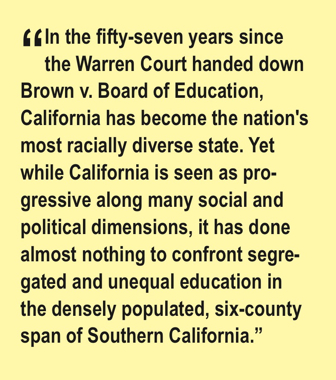March 20, 2011
“Segregation is an educational and social disease. Sometimes its impacts are ameliorated for a while in some places, but the broad relationship is clear and strong.
“Isolation by poverty, language, and ethnicity threatens the future opportunities and mobility of students and communities excluded from competitive schools, and increasingly threatens the future of a society where young people are not learning how to live and work effectively across the deep lines of race and class in our region.
 “Critics say we should just put the money into equalizing the schools where they are and insist that they achieve.
“Critics say we should just put the money into equalizing the schools where they are and insist that they achieve.
“That has been California and the nation’s basic policy for more than four decades. That is what Head Start, Title I, No Child Left Behind and a variety of California reforms have tried to do.
“California adopted the full set of standards and accountability reforms pioneered in the South in the l970s, and then market-based reforms like charter schools in the l990s. We test teachers and students intensely and punish or exclude those who fall behind. Schools are threatened and sanctioned.
“These efforts have failed, primarily because they do not equalize the factors that are most strongly related to student learning – the peer groups of well-prepared and motivated students backed by communities with power to shape school opportunities, and the expert and experienced teachers who very strongly prefer to work with those students in those communities.”
– Gary Orfield in the forward to “Divided We Fail: Segregation and Inequality in the Southland’s Schools,” a study of six Southern California school districts by Gary Orfield, Genevieve SiegelHawley and John Kucsera, March 18, 2011, The Civil Rights Project/Proyecto Derechos Civiles
Download the news release, the executive summary, the full report
